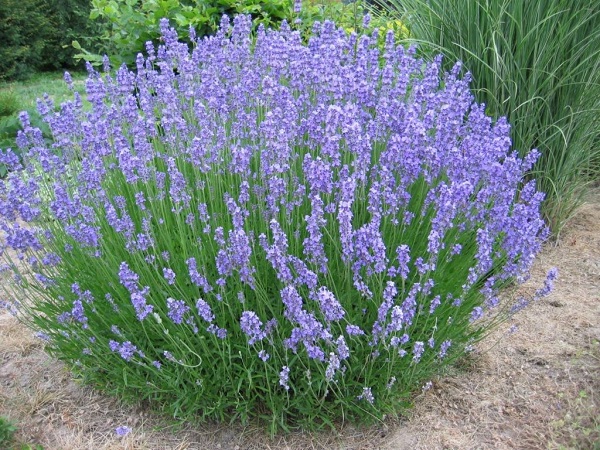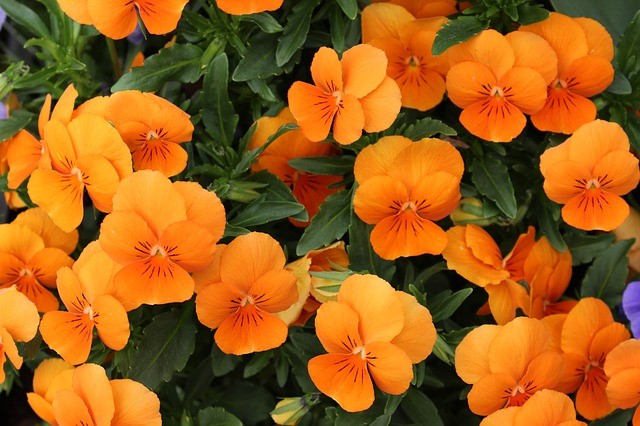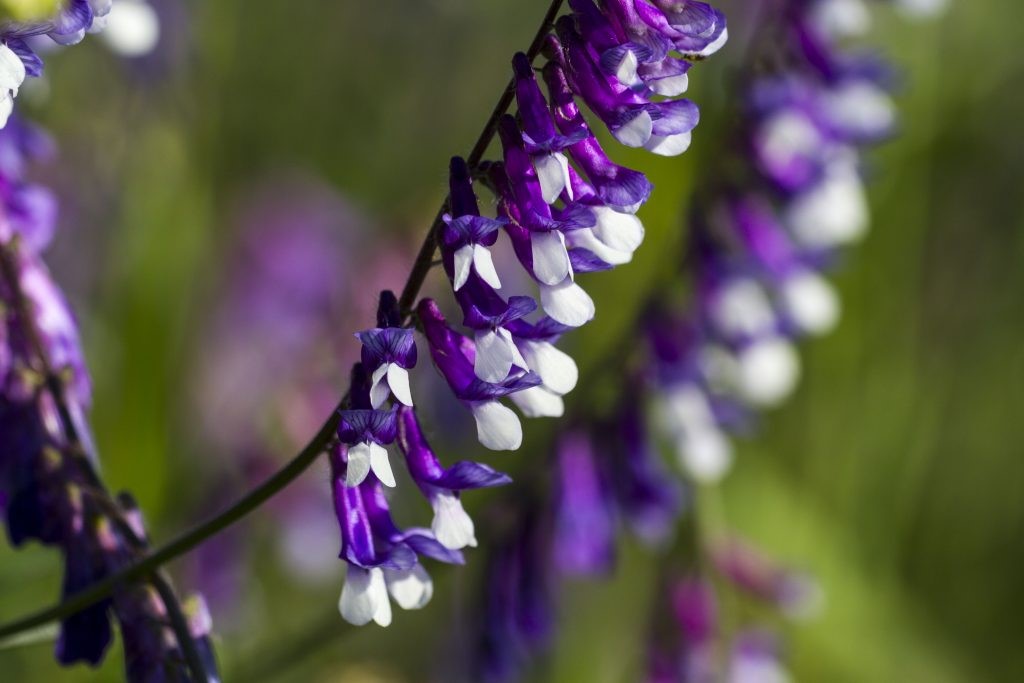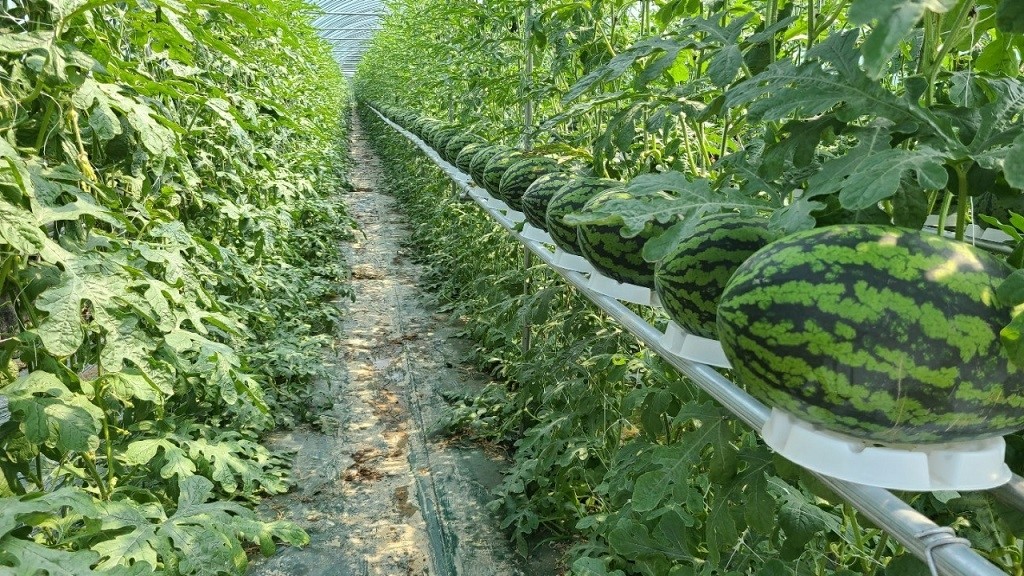If no man is an island, so do watermelons and other plants like pumpkins. Plants also need diversity to grow well and even taste better.
In your case, you’re probably wondering what grows well with watermelon to grow sweet-tasting fruits this growing season.
(You could use the table of contents below to jump to the sections that are most important to you.)
Q. What Grows Well With Watermelon?
Plants that grow well with watermelon are marigold as a bee-magnet, pole beans as natural soil nitrogen provider, and radish to manage the vines. Planting them around your watermelon is called companion planting or intercropping. Some gardeners are successful with this gardening technique, while some have lower yields.
We will discuss the efficiency of companion planting and the myths that surround it in a separate section below.
Let us elaborate on why these plants qualify as the best allies of watermelons.
What Makes a Plant a Suitable Companion to Watermelons?
The secret behind the delectable watermelon fruits is the time and effort behind their growth. Watermelons need up to 100 days before harvest season and depend heavily on insects for pollination.
Plants that grow well with watermelons and their different varieties are the ones that have the following qualities:
- Doesn’t cause too much shade: What grows well with watermelon are short plants that provide the full-sun exposure that melons need.
- Invites beneficial insects and repels the bad ones: Insects play an essential role in pollination. The plants around watermelon should attract pollinators and predators of the bugs common in watermelons. The two notorious and pesky insects that feed on watermelons are cotton aphids and cucumber beetles.
- Improves the soil microbiome and structure: Plants that can improve the soil and add more nutrients to the soil microbiome helps watermelon fruits grow and taste better.
- Serves as a temporary fence: Since watermelons take around three months to harvest, having plants around them can help enrich the soil and make your plot look more organized.
- Sacrificial plants or trap plants: If you want to shield your watermelons against pests, you may place an added layer of protection by having plants that they can devour. They will divert the pests away from your crop.
There is no single crop that can possess all of the qualities above. There is a group of plants that can deliver each quality and improve the health of watermelons. Learn more about the allies of watermelons below.
6 Types of Companion Plants For Watermelons
Companion planting or intercropping is a gardening technique that uses plants as natural pest control, nutrient source, and other plant care for a crop. We grouped the companion plants of watermelons into six categories based on their function.
Most of the plants mentioned in this post are not too tall to cast a shade over watermelons. Other than that, they have their qualities beneficial to your viney melons.
If you have a big plot and find joy in growing other plants while waiting for the harvest season of watermelon, you may grow any of the following:
#1 Bee-Magnet Plants

One watermelon plant produces both male and female flowers. The male flowers come first and grow more in numbers than female flowers. Female flowers are shy because they are only open for a day. That means insects only have a small timeframe or opportunity to pollinate the flowers.
Pollinating watermelon flowers frustrates some gardeners because it delays the fruiting process. The next thing you know is fall season comes, and your watermelon failed to bear fruit. In that situation, bee-magnet plants a.k.a flowering plants, are to the rescue.
Not all flowering plants are suitable to place around a watermelon simply because they also harbor pests common to the Cucurbit plants.
Here are the best flowering plants that will surely attract sweat bees and other beneficial insects:
French Marigold

Aside from its bright yellow flowers that add a colorful contrast to your green patch, french marigolds help bring beneficial insects around watermelons. Its scent also repels the destructive ones.
Marigold plants are low-lying plants that do not cast a shade on watermelons. The enchanting smell of marigold flowers is pungent to pests and repels the notorious ones like:
- Aphids
- Mosquitoes
- Cabbage worms
- Squash bugs
- Tomato worms and other pests
According to a study, marigold has an intrinsic insecticidal activity for whiteflies and Western tarnished plant bugs. The researchers also acknowledge the untapped potential of marigold as an alternative insecticide to conventional pyrethrins and other synthetic pesticides.
Lavender

Did you know that lavender and watermelon go well together as plants and as a drink?
As plants, lavender produces flowers that encourage pollinating insects like ladybugs or honeybees. Aside from increasing the insect population around your garden, its strong scent also masks the smell of watermelons that deter pests like moths.
As food, you can blend watermelon and lavender to make a refreshing summer drink. Check out the recipe here.
Borage

According to the University of California, borage is considered a bee bread due to its abundant nectar. It produces edible star-shaped blue flowers that help feed bees, lacewings, and birds. Aside from watermelon, it is also an ideal companion plant to:
- Legumes
- Strawberries
- Spinach
- Brassicas like broccoli, cauliflower & cabbage
Most professional gardeners recommend planting it with comfrey and bee balm to increase the pollinator population in your garden.
Aside from its benefit on watermelon pollination, you can enjoy the floral taste of borage as a fresh addition to vegetable salads or drinks. The flowers or leaves of borage also provide intense anti-inflammatory properties and other medical benefits.
Buckwheat

Buckwheat is well-known as the kind of crop stuck in a line between a grain and a cereal. More than its identity as a crop, it is a perfect shield and bee-magnet for watermelons. They attract predatory insects that will do pest control for you.
The lush growth of buckwheat bush serves as a barrier from flying insects. Its multiple white flowers also drive the bee population around your crops, increasing the chances of pollinating the watermelon flowers.
A Japanese study from Ehime University has shown that buckwheat increases hoverflies and reduces the aphid population when used as an intercropping plant in peach trees.
Other plants that attract pollinators

The flowers of dill and cosmos are also attractive to predatory insects that feed on watermelon pests. Other options are chamomile & sage.
#2 Aromatic or Pungent Herbs or Plants
What grows well with watermelons are those with strong scents that are pungent to them. Pests hate the aroma and the strong smell of some herbs and other aromatic plants.
Most organic pest repellents contain extracts of herbs like mint to keep bugs away without killing them. These herbs include:
Fragrant Herbs: Basil, Thyme, and Rosemary

Potted basil, thyme, and rosemary are an ideal addition to your watermelon plot because of their insect-repelling properties. They naturally exude strong scents that keep whiteflies, mosquitoes, and fleas at bay. Simultaneously, they also invite beneficial insects and pollinators.
They don’t cast a shade on watermelons since they grow low. Plus, they’re also a go-to source of herbs for cooking while you wait for the watermelons to ripen.
Oregano

Oregano is a plant that spreads a distinct aroma wherever it is planted. With its scent, it can lure the pests away from the watermelon. When grown in numbers, the aroma of oregano can overpower the scent of plants in a plot with its unique smell.
Nasturtiums

Planting nasturtiums with your watermelon helps you hit two birds with one stone. They produce many beautiful and bright flowers that attract pollinators, especially butterflies. At the same time, the flowers create a scent and a “chemical” that repels common pests in watermelons like aphids.
Despite the good feedback from gardeners, there are no scientific resources that discuss the chemical that nasturtiums release. They also have a conflicting effect on plants where some gardeners experience an increase of aphids on their plants.
With the lack of enough evidence, nasturtiums have been cited in a study by William Snyder from Washington State University. In his research, nasturtiums, including corn and broccoli, have substantially reduced the number of striped cucumber beetles in cucurbit plots.
Catnip

Aside from the narcotic effect of catnip on cats, it is also subject to many studies about its insect-repelling properties.
In a study conducted by Christopher Peterson from the Iowa State University, catnip contains nepetalactone that repels the following insects:
- Flea beetles
- Black ants
- Coconut stick insects
- Lubber grasshopper
- German cockroaches
- Aphids.
Aside from its pest-repellent properties, it can also drive pollinator populations to your watermelon patch. You have a higher chance of pollinating watermelon flowers with many pollinators around.
Tansy

Tansy looks can make your garden plot look fancy and pest-free. In a 1973 New York Times post, the intense aroma of tansy has a well-known reputation for being a good insect repellent for disease-spreading insects like moths, fleas, flies, ants, and lice. In itself, it is immune to pest attacks.
#3 Soil Builders
Watermelons also benefit from plants that help maintain the nutrient in the soil and serve as a good shelter for beneficial and predatory insects. The soil builders for watermelon include:
Hairy Vetch

Hairy vetch is one of the best cover crops to plant with watermelons because of its antifungal properties and watermelon yields.
According to a study published in the American Phytopathological Society, the hairy vetch reduces the occurrence of fusarium wilt and increases watermelon yield by 35% to 65%.
Hairy vetch is also effective in controlling anthracnose and gummy stem blight. Based on research, it can also serve as a natural replacement for synthetic nitrogen that can help growers save $26 per acre.
Due to its multiple benefits, we consider hairy vetch as the best answer for the question of what grows well with watermelon.
Green Beans

Pole beans can save your pocket on spending on nitrogen fertilizers. They are natural nitrogen fixers that feed watermelons during their growing period. Other beans ideal as companion plants are:
- Fava beans (aka faba, broad)
- Alfalfa beans
- Runner beans
- Field beans
- Sweet beans
- Peanuts
- Soybeans
- Cream beans
- Black-eyed beans
- Purple-hulled beans
- Lupins
- Lentils
- Cowpeas
- Chickpeas
The only problem in intercropping them with watermelon is their height which can cast shade on watermelon. However, with proper placement of the trellis and direction, the shade will no longer be a problem.
Winter Wheat

Winter wheat can serve as a windbreak for watermelons. The ideal time to plant them is autumn or fall so they can provide enough protection to watermelons during the next growing season.
According to a study, the roots of winter wheat have coumaric acid that reduces the occurrence of fusarium wilt in watermelons.
#4 Bait or Trap plants
Trap plants are sacrificial plants that you will intentionally plant to feed the pests and keep them away from your watermelons. They often attract cucumber beetles away from watermelons until they get established and strong enough to withstand pest infestations.

The best trap crop for watermelons is Blue Hubbard. It is a squash cultivar that contains high levels of biochemical compound cucurbitacin. In two weeks, the cucurbitacin increases and attracts cucumber beetles and squash bugs through its flowers.
#5 Fungus Busters
Alliums contain antifungal and insect-repelling properties, making them a good companion plant to watermelons. They are also low-lying plants that do not add shade to your plot. The plant under the allium family are as follows:
- Onions
- Garlic
- Chives
- Leeks

#6 Temporary Fence Plants
Watermelons need a lot of space because their vines can expand up to 20 feet. With that, you can place them around some types of plants to contain their ever-growing vines until the harvest season. These plants are as follows:
#1 Radish

Radish has a short growing period and shallow root system. They make good plants to serve as a fence for your watermelon during the growing.
A study from the University of Nebraska found that the scent of the radish greens repels bugs, causing a 75% reduction in squash bugs and beetles.
#2 Lettuce

Lettuce is also another good crop to plant because they are easy to grow and shallow. It can keep the weeds at bay and also improve the condition of the surrounding soil around watermelons.
Companion Planting: Is It a Myth or a Real Strategy?
If you’ve been searching around about companion plants or intercropping, you might notice that there is a lot of conflicting information about it. Some gardeners do not believe in this technique, and some have succeeded in increasing their yield.
If we look back in history, American Indians were already practicing intercropping. A well-known trio is the so-called Three Sisters, consisting of squash, beans, and corn. These three plants work together to keep each other healthy.
- The corn serves as the trellis for the beans.
- The beans fix the nitrogen in the soil for the squash.
- The squash vines serve as the living mulch for all three plants.
Plant scientists beg to question the validity of companion planting as a legitimate gardening practice. Though, some research was able to attest to the intercropping success of some plants.
Further studies have a long way to go to discover the exact efficacy of companion planting since there are a lot of factors to be considered, like weather, chemical relationship, and biological structure of plants.
The bottom line is if intercropping works for you, then continue doing it. There’s no guarantee that the companion planting will work 100% every time you try it. However, it’s worth trying, especially if you’re looking for ways to decrease the use of chemical insecticides and fertilizers.
Successful intercropping studies and experience of gardeners cited the following benefits of companion planting to their crops:
- Improve soil condition
- Deter unwanted pests without chemicals
- Improve taste and quality of watermelons
- Speed up pollination
- Attract beneficial and predatory insects
- Ground cover against weeds
Questionable Crops To Grow Around Watermelons
Along with the questionable efficiency of companion planting is a ton of blended stories about folklore and reality. Many gardeners are confused about the conflicting information about what grows well with watermelon.
Below are some plants that split the favor of watermelon growers due to their varying pros and cons. We highly suggest using trial periods for the following plants to check their efficiency on a bigger scale.
Aster Family of Flowers
The aster family includes sunflowers, cosmos, and coneflowers. They are attractive to bees but also attract aphids. They also grow tall, creating a shade for watermelons.
Roses
Roses have an enchanting scent but are not strong enough to deter pests. They provide the opposite effect and may invite more pests like aphids to your watermelon patch.
Potatoes
Potatoes are deemed to be a good companion plant because they require mulching which also benefits watermelons.
Though the mulch can help retain the moisture in the soil, potatoes attract different types of aphids, even the ones found in watermelons. Plant this companion crop with caution and observe if it will work for one crop.
Tomatoes
Tomatoes and watermelons are warm-season plants that benefit from the same growing requirements like sunlight, water, and temperature. However, they become incompatible in terms of spacing.
Corn
Planting is not advisable for intercropping with watermelons if they are planted in the wrong location. Thick bushes of corn can cause shade that prevents a good circulation to watermelon plants, leading to slow growth.
However, if the watermelon is planted within a good distance from corn, they grow well together and reduce the occurrence of striped cucumber beetles.
Lamb’s Quarters
Some gardeners claim that lamb’s quarters improve the flavor and yield of watermelons. However, a study suggests that this weed can be a host for the watermelon mosaic virus.
Squash or Pumpkin
Watermelon and squash or pumpkins have the same growth requirements. However, they also have the same types of pests. It is crucial to plant them in another plot for one to two years to prevent the virus and pest buildup in the soil.
Tips in Growing Watermelons Using Companion Planting or Intercropping
Here are some tips from experienced gardeners that you can emulate in your garden.
(1) The cucurbit family can be grown in one plot together as long as you let the plot breathe with a two to three growing season interval. By doing this, you can prevent diseases and pests from developing in the soil.
(2) Timing is everything when it comes to intercropping. You have to make sure that the flowering companion plants bloom at the same time as the watermelon plants.
(3) If you have space issues in your garden, you can try the vertical watermelon growing technique. The fruits are elevated using a board to ensure they are away from pests while making sure you’re making the most out of your garden space.

(4) Like pumpkins, watermelons require full sun, so they should not be planted next to any tall crops that can cast shade on them. If you aim to plant corn or beans, strategically place them around the watermelon so they won’t block the sunlight.
(5) Researchers found that the root of watermelon produces allelopathic compounds that affect seed germination and seedling growth of other plants. Consider this characteristic whenever you plan to grow new crops in your watermelon plot.
Final Thoughts
We hope that this post helped you identify what grows well with watermelons and their impact on your garden. Though there are a lot of questions about companion planting or intercropping, it’s still worth the try.
Once you get the working variety of plants, you’ll no longer depend on synthetic chemicals to grow your watermelons. Better yet, you’ll go full-organic in gardening going forward.
Let us know in the comment section your thoughts and experiences about intercropping.
